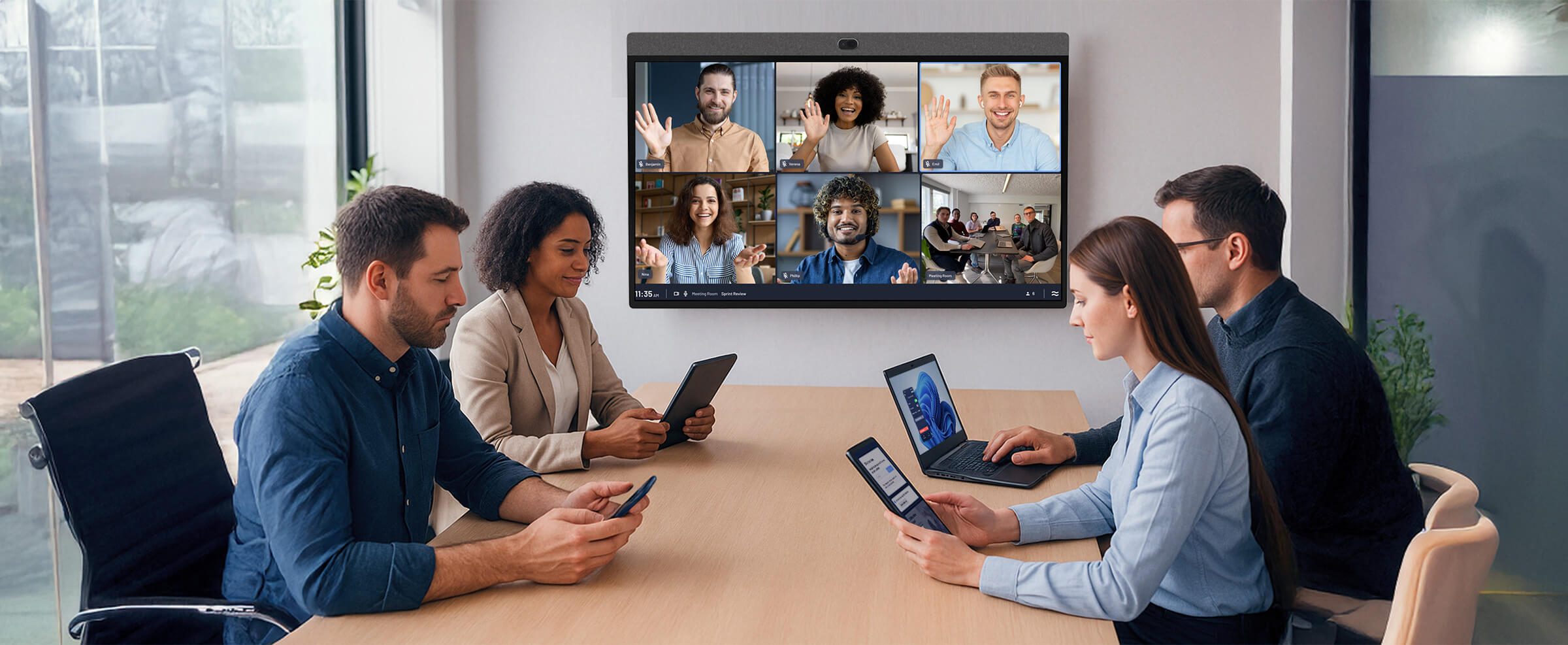A brief history of BYOD and where it’s going next

I’ve spent a lot of time thinking about how we collaborate – and how it could be easier. In my role as Corporate Account Manager at Airtame, I get to see the friction points people face every day when trying to connect, present, or join meetings. The feedback I see from our customers and partners helps to inform development at Airtame. One key takeaway from my years of speaking with industry experts and customers is the need for BYOD isn’t going anywhere.
Bring Your Own Device or BYOD started out as a great idea: Let people use the tools they’re already comfortable with. But in practice, it hasn’t always been smooth sailing. We’ve lived through a few iterations of this now, and today, I want to walk you through what I see as the three generations of BYOD and why the third one finally gets it right.
Airtame has followed the evolution of BYOD
For more than a decade, Airtame has been following the evolution of BYOD. We were at the forefront of wireless sharing just trying to solve the most basic issue with BYOD, collaborating on a display easily. It’s what drew me to join Airtame after having my own frustrations with the typical way of utilizing meeting spaces in the mid-2010’s.
Back when Airtame launched its first product, the world was still running on VGA cables. Meeting rooms were full of dongles. And anyone who dared to connect a MacBook to a projector… well, good luck. We saw that friction. We felt it. And we set out to fix it for anyone who needed to share something on a screen without jumping through hoops.
That was the beginning and more than ten years later, Airtame is one of the few companies that’s been through the full evolution of BYOD. We’ve watched the shift. We’ve been there for all of it. And I’d argue we’ve helped define what the next generation should look like.
Let’s break it down.
BYOD 1.0: Cables, adapters, and setup struggles
The earliest form of BYOD was simple on the surface: plug in your laptop (back when computers still had HDMI ports) and share your documents. For IT admins, it felt like the most straightforward setup – just a cable and you’re good to go. But for users, it often meant juggling HDMI or VGA connectors, hoping the room still had a cable, and fiddling with display settings on both your laptop or the display. It was clunky and prone to awkward breaks at the start of every meeting. Not to mention the mid meeting pauses to pass the cord to someone else or have to designate an attendee as the “sharer”. Still, it marked a real shift. People started expecting to use their own devices (not shared computers) when presenting. It felt empowering, even if it wasn’t exactly elegant.
BYOD 2.0: Video calls and way too much complexity
Then came the hybrid era. Suddenly, screen sharing wasn’t enough. You had to join a call, launch a conferencing platform, and route video and audio through the right device. IT teams now had to be audio visual technicians and users were thrust into learning new workflows for collaborating. That was BYOD 2.0. It added flexibility, sure, but also a TON of complexity. The experience depended on the user knowing which buttons to press, which cables to connect, which input to select. If anything went wrong, the meeting stalled. Frustrating for users and IT teams alike, as I’m sure many of you have experienced firsthand.
BYOD 3.0: The moment everything clicks
Here’s where things get interesting. The newest generation of BYOD setups, what I’d call BYOD 3.0, isn’t more than wireless. It’s wireless that works the way people expect it to.
Skip the cables, cut the hassle. Just walk into a room, and everything works with whatever you bring. You don’t have to know what app the room supports or whether your laptop needs a driver. The system meets you where you are. That’s the promise, and it’s one we’re proud to deliver on.
Most“wireless conferencing” setups still rely on your laptop to do the heavy lifting. The video call runs locally, and your device has to beam both the screen and the camera feed to the room system. That eats up resources, drains battery, and relies heavily on the network and hardware. Others go the opposite route. The room owns the meeting entirely, which means limited flexibility and less control for the user.
We’ve taken a different approach. One that puts the user in control without putting pressure on their device. It’s simpler and more practical for the way people work today. What sets this new wave apart isn’t the tech, it’s more so the lack of tech getting in your way.
What it means for the real world
I’m a big believer that technology should stay out of your way. It should be so easy you don’t know it’s there, and more importantly – it should enhance the collaborative experience. That’s why BYOD 3.0 matters. BYOD 3.0 is not about flashy features or adding a lot of extra gear. It’s about removing friction. It’s also about helping people do their best work, without needing to wear an IT hat just to start a meeting.
And this shift is only accelerating. Our latest partnership with Neat takes things even further, bringing Airtame’s wireless flexibility to Neat’s beautifully engineered video devices. Together, we’re delivering the kind of seamless experience that BYOD was always meant to be.